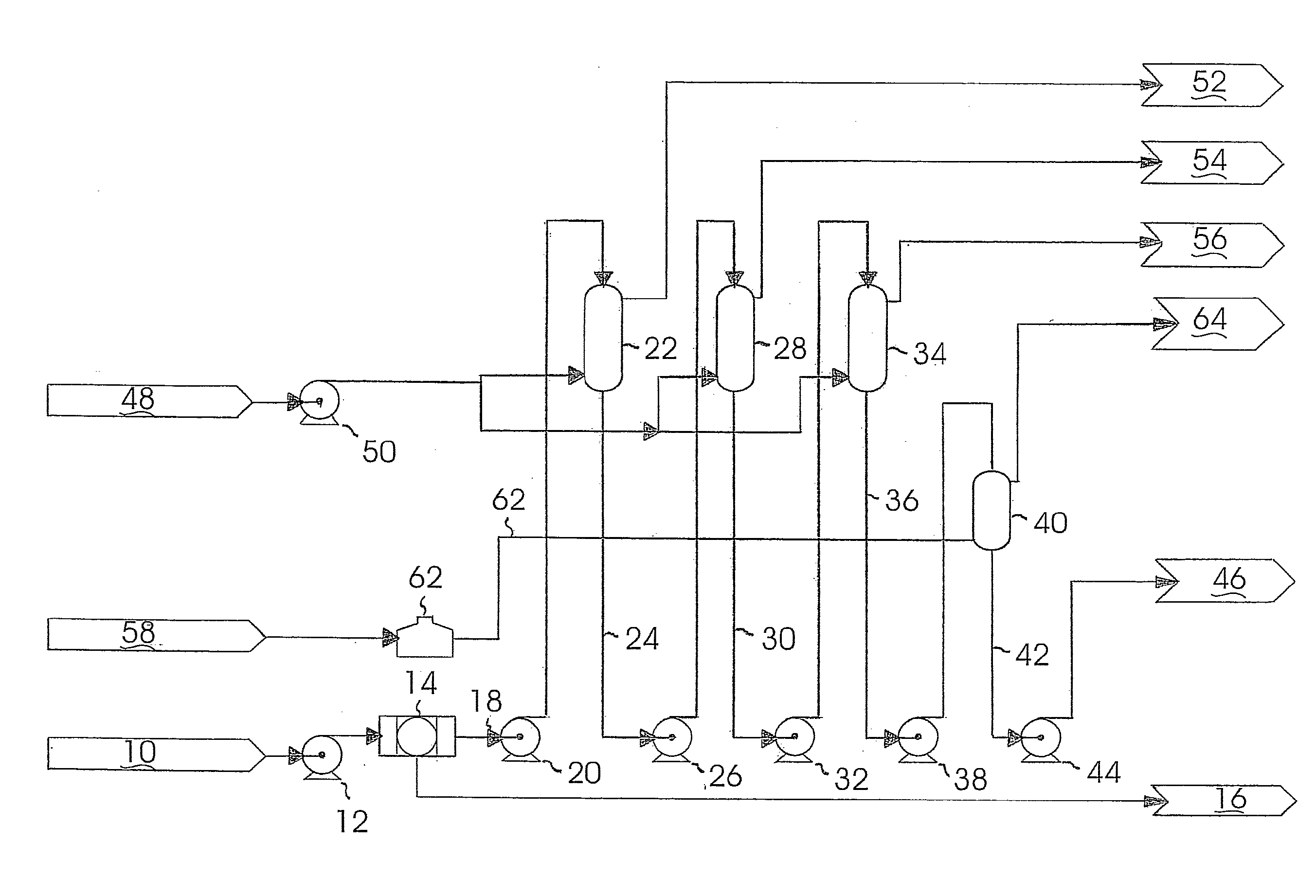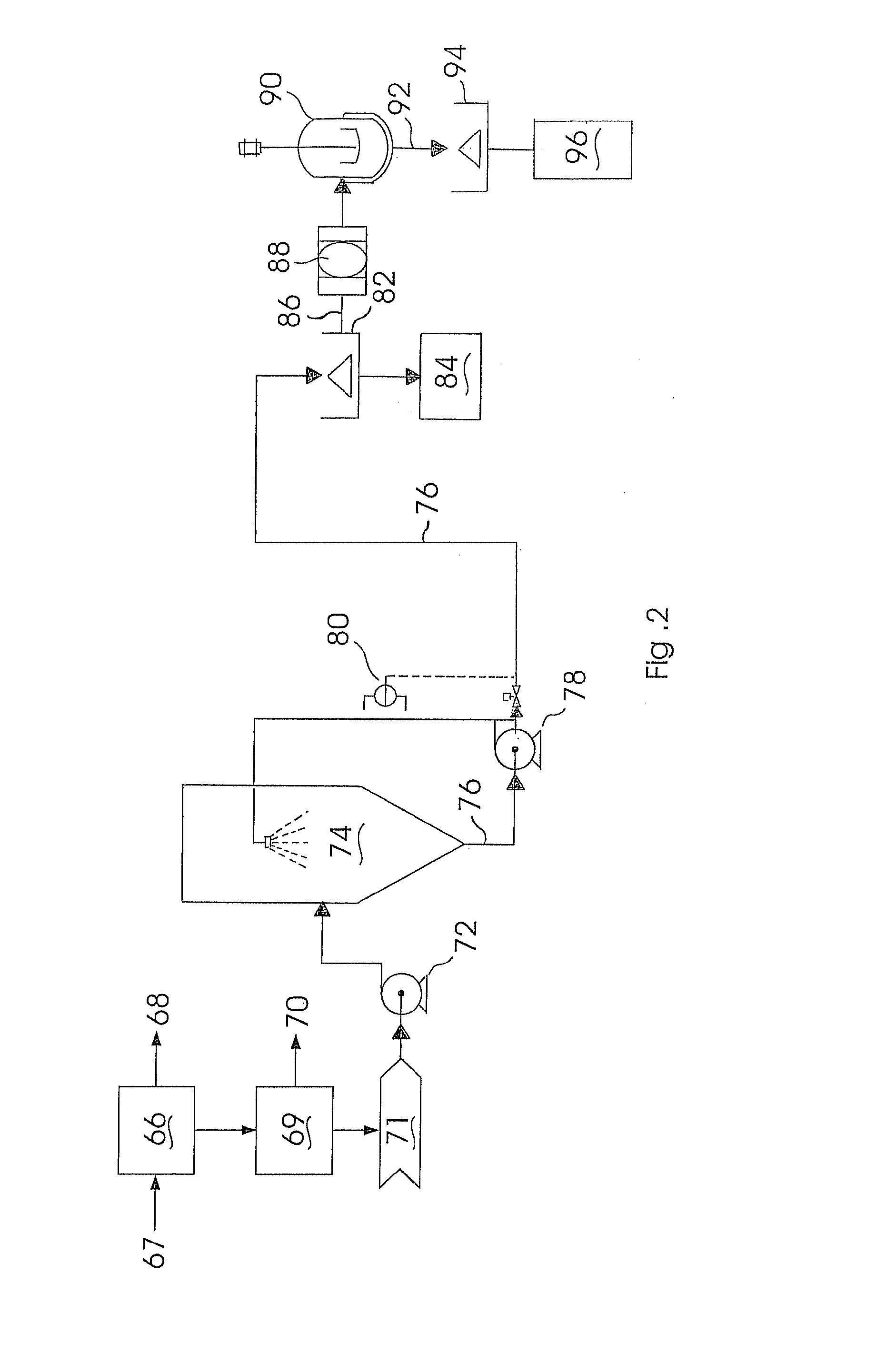Water treatment
a technology for water treatment and water treatment, applied in water/sewage treatment by ion exchange, energy-based wastewater treatment, etc., can solve the problems of water pollution in many ways, affecting the quality of water, and affecting the ability to be used in agriculture. , to achieve the effect of reducing sodium and high purity
- Summary
- Abstract
- Description
- Claims
- Application Information
AI Technical Summary
Benefits of technology
Problems solved by technology
Method used
Image
Examples
Embodiment Construction
[0034]This invention, in its broadest aspect, relates to the treatment of water which contains dissolved sodium, calcium and magnesium ions. The water will generally contain at least 100 ppm of sodium ions and more generally at least 300 ppm of sodium ions. Examples of waters which can be treated by the method of the invention are effluents, particularly acidic effluents such as AMD, river waters and other polluted waters and effluents. In many AMD waters the sodium ion content is in the range 500 ppm to 1000 ppm, especially from 700 to 1000 ppm, for example AMD from a coal mine. The typical pH of an AMD is 2 to 8. The water may thus be an acid effluent such as AMD, river water, brine from a reverse osmosis treatment of AMD or other such effluent. These waters also contain dissolved calcium and magnesium ions and also sulphates and chlorides. The invention provides for a method of treating these waters to reduce the levels of these dissolved ions resulting in water being produced wh...
PUM
| Property | Measurement | Unit |
|---|---|---|
| Temperature | aaaaa | aaaaa |
| Temperature | aaaaa | aaaaa |
| Fraction | aaaaa | aaaaa |
Abstract
Description
Claims
Application Information
 Login to View More
Login to View More - R&D
- Intellectual Property
- Life Sciences
- Materials
- Tech Scout
- Unparalleled Data Quality
- Higher Quality Content
- 60% Fewer Hallucinations
Browse by: Latest US Patents, China's latest patents, Technical Efficacy Thesaurus, Application Domain, Technology Topic, Popular Technical Reports.
© 2025 PatSnap. All rights reserved.Legal|Privacy policy|Modern Slavery Act Transparency Statement|Sitemap|About US| Contact US: help@patsnap.com



